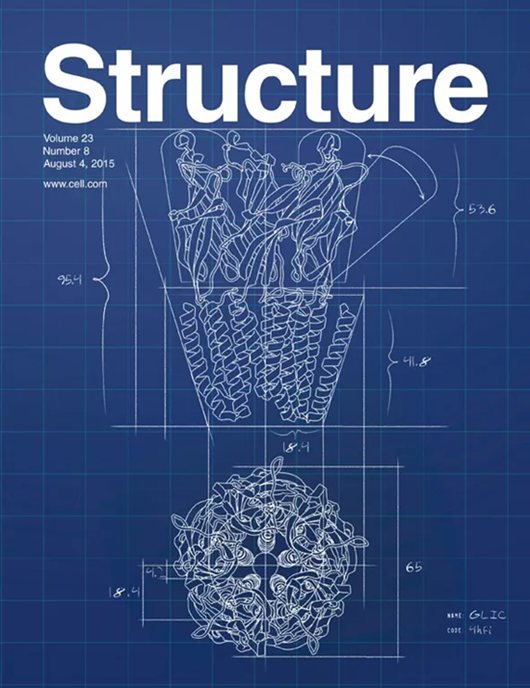Spy-ing on nucleic acids: Atomic resolution of the S. pyogenes CRISPR-Cas9 surveillance state
IF 4.4
2区 生物学
Q2 BIOCHEMISTRY & MOLECULAR BIOLOGY
引用次数: 0
Abstract
In a recent issue of Cell Chemical Biology, De Paula et al.1 report an extensive methyl-TROSY solution NMR study of the CRISPR-Cas9 holoenzyme. Studying millisecond-to-second protein dynamics using individual domain constructs of Cas9 coupled to structural interrogations of the full-length enzyme, the authors describe the Cas9 “surveillance state,” a molecular mechanism driving the discrimination between on- and off-target DNA.核酸间谍:化脓性链球菌CRISPR-Cas9监测状态的原子分辨率
在最近一期的《细胞化学生物学》中,De Paula等人报道了对CRISPR-Cas9全酶的甲基- trosy溶液核磁共振研究。研究人员利用Cas9的单个结构域结构与全长酶的结构疑问来研究毫秒到秒的蛋白质动力学,他们描述了Cas9的“监视状态”,这是一种驱动靶向和非靶向DNA区分的分子机制。
本文章由计算机程序翻译,如有差异,请以英文原文为准。
求助全文
约1分钟内获得全文
求助全文
来源期刊

Structure
生物-生化与分子生物学
CiteScore
8.90
自引率
1.80%
发文量
155
审稿时长
3-8 weeks
期刊介绍:
Structure aims to publish papers of exceptional interest in the field of structural biology. The journal strives to be essential reading for structural biologists, as well as biologists and biochemists that are interested in macromolecular structure and function. Structure strongly encourages the submission of manuscripts that present structural and molecular insights into biological function and mechanism. Other reports that address fundamental questions in structural biology, such as structure-based examinations of protein evolution, folding, and/or design, will also be considered. We will consider the application of any method, experimental or computational, at high or low resolution, to conduct structural investigations, as long as the method is appropriate for the biological, functional, and mechanistic question(s) being addressed. Likewise, reports describing single-molecule analysis of biological mechanisms are welcome.
In general, the editors encourage submission of experimental structural studies that are enriched by an analysis of structure-activity relationships and will not consider studies that solely report structural information unless the structure or analysis is of exceptional and broad interest. Studies reporting only homology models, de novo models, or molecular dynamics simulations are also discouraged unless the models are informed by or validated by novel experimental data; rationalization of a large body of existing experimental evidence and making testable predictions based on a model or simulation is often not considered sufficient.
 求助内容:
求助内容: 应助结果提醒方式:
应助结果提醒方式:


